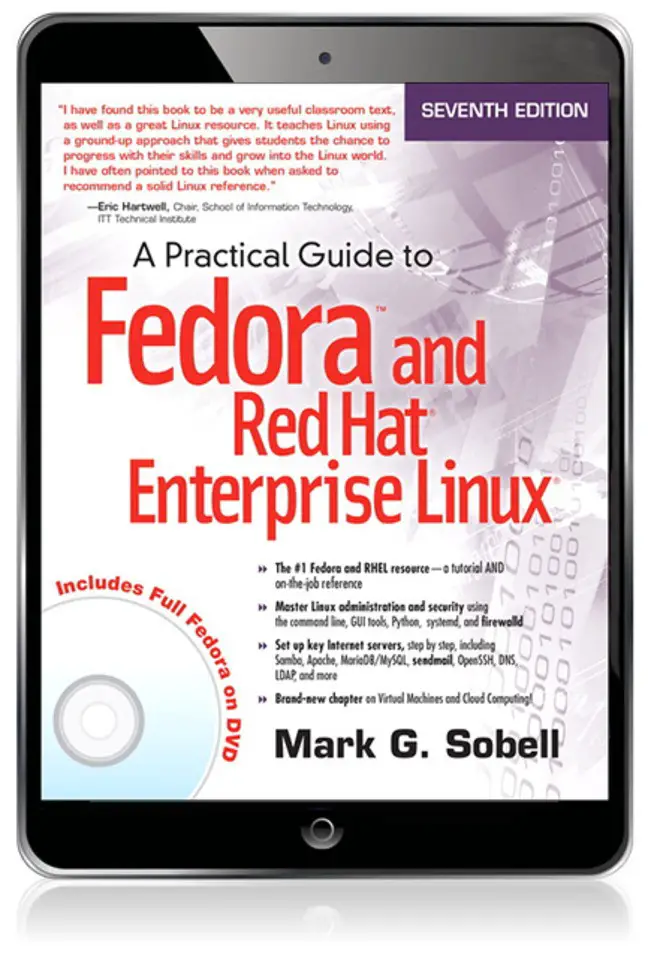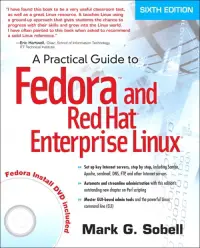Fedora Vs. Red Hat Enterprise Linux: Community Or Commercial?

Fedora and Red Hat Enterprise Linux (RHEL) are both popular Linux distributions, but they have different target audiences and use cases. Fedora is a community-driven distribution that is updated frequently with the latest software and features. RHEL is a commercial distribution that is supported by Red Hat and is designed for stability and long-term support.

Fedora

Fedora is a Linux distribution that is developed by the Fedora Project, a community of free and open-source software developers. Fedora is updated frequently with the latest software and features, and it is used by a wide range of users, including developers, system administrators, and enthusiasts.
Advantages of Fedora:
- Community-driven: Fedora is developed by a community of volunteers, which means that it is constantly being improved and updated.
- Free and open-source: Fedora is free to download and use, and all of its source code is available.
- Latest software and features: Fedora is updated frequently with the latest software and features.
- Wide range of users: Fedora is used by a wide range of users, including developers, system administrators, and enthusiasts.
Disadvantages of Fedora:
- Less stable: Fedora is updated frequently, which can sometimes lead to stability issues.
- Less support: Fedora is not supported by Red Hat, so users may have difficulty finding help if they encounter problems.
- Less commercial software: Fedora does not include as much commercial software as RHEL.
Red Hat Enterprise Linux (RHEL)
Red Hat Enterprise Linux (RHEL) is a commercial Linux distribution that is developed by Red Hat. RHEL is designed for stability and long-term support, and it is used by businesses and organizations around the world.
Advantages of RHEL:
- Stability: RHEL is a stable distribution that is designed for long-term support.
- Support: RHEL is supported by Red Hat, so users can get help if they encounter problems.
- Commercial software: RHEL includes a wide range of commercial software, which can be useful for businesses and organizations.
- Security: RHEL is a secure distribution that is regularly updated with security patches.
Disadvantages of RHEL:
- Commercial: RHEL is a commercial distribution, which means that users must pay for a subscription.
- Less frequent updates: RHEL is not updated as frequently as Fedora, which means that it may not have the latest software and features.
- Less flexibility: RHEL is a more locked-down distribution than Fedora, which can make it less flexible for some users.
Conclusion
Fedora and RHEL are both popular Linux distributions, but they have different target audiences and use cases. Fedora is a community-driven distribution that is updated frequently with the latest software and features. RHEL is a commercial distribution that is supported by Red Hat and is designed for stability and long-term support.
Ultimately, the best distribution for you will depend on your individual needs and preferences. If you are looking for a free and open-source distribution that is updated frequently, then Fedora is a good option. If you are looking for a stable and supported distribution that is designed for businesses and organizations, then RHEL is a good option.# Fedora Vs. Red Hat Enterprise Linux: Community Or Commercial?
Executive Summary
Red Hat Enterprise Linux (RHEL) and Fedora are two popular Linux distributions that offer distinct advantages and target separate audiences. While Fedora is a community-driven distribution renowned for its cutting-edge innovations and bleeding-edge software, RHEL is a commercial distribution acclaimed for its stability, reliability, and corporate support.
This article delves into the fundamental differences between these two distributions, contrasting their approaches, strengths, target markets, and the customer bases they cater to. Ultimately, the choice between Fedora and RHEL depends on the specific requirements and preferences of the user.
Introduction
Fedora and Red Hat Enterprise Linux (RHEL) are Linux distributions widely recognized for their dependability, performance, and extensive software ecosystems. They both offer a wealth of applications, tools, and desktop environments to suit the diverse needs of users. However, these distributions follow different development philosophies, resulting in distinct strengths and weaknesses. This article aims to shed light on the key variations between Fedora and RHEL to help users make informed decisions based on their requirements.
Community vs. Commercial:
Fedora and RHEL harbor distinct development approaches, primarily determined by their fundamental philosophies.
-
Fedora:
A Community-Driven Distribution:- Fedora thrives as an open-source project, driven by a global community of developers and contributors.
- It reflects the latest technological advancements and incorporates innovative features found in upstream sources.
- Its rapid release cycle ensures access to groundbreaking software but introduces a level of instability compared to commercial distributions like RHEL.
- Ideal for users seeking the cutting-edge, willing to embrace change, and comfortable managing potential issues associated with bleeding-edge software.
-
RHEL:
A Commercial Distribution Backed by Red Hat:- RHEL is Red Hat’s commercial enterprise distribution, renowned for its rock-solid stability, comprehensive support services, and long-term maintenance.
- Rigorously tested and certified to deliver exceptional quality and reliability in production environments.
- Adopts a conservative approach to software updates, prioritizing stability over bleeding-edge features, and introducing new versions every 3 to 4 years.
- Suitable for mission-critical deployments, enterprise environments demanding stability, and organizations seeking comprehensive support infrastructure.
Software Updates:
The cadence and philosophy surrounding software updates in Fedora and RHEL further differentiate the two distributions.
-
Fedora:
Rolling Release:- Employs a rolling release model, which provides a continuous stream of updates and new software versions.
- Maintains a single, up-to-date repository, enabling users to receive the latest updates as soon as they are available.
- Software is updated frequently, ensuring access to the most recent features and tools.
- Users benefit from ongoing updates but may encounter potential stability issues, given the continuous evolution.
- Suitable for users who value cutting-edge software, willing to navigate occasional instability.
-
RHEL:
Stable Releases:- Follows a stable release model, delivering major versions every 3 to 4 years, paired with regular maintenance releases within each version.
- Each major release receives 10 years of support, including security patches, bug fixes, and select new features.
- The stability-focused approach minimizes the risk of disruptive changes, making RHEL a preferred choice for production environments.
- Users receive trusted, rigorously tested updates without jeopardizing the stability of their systems.
- Ideal for enterprises prioritizing stability, reliability, and predictable update schedules.
Support:
Fedora and RHEL offer distinct levels of support, catering to different user needs and expectations.
-
Fedora:
Community-Maintained Support:- Offers community-driven support through forums, mailing lists, documentation, and IRC channels.
- Relies heavily on the contributions of volunteers and enthusiasts to assist users with issues and queries.
- Community-based support may vary in responsiveness and expertise compared to dedicated professional support found in commercial distributions.
- Suitable for users who prefer a collaborative approach, value community involvement, and are comfortable troubleshooting potential problems with the support of the community network.
-
RHEL:
Commercial Support from Red Hat:- Red Hat provides comprehensive and robust support to subscribed customers through dedicated channels, including phone, email, and customer portals.
- Users gain access to skilled Red Hat engineers for assistance with troubleshooting, problem resolution, and technical issues.
- Commercial support offers guaranteed service-level agreements (SLAs), ensuring prompt and effective responses.
- Suitable for enterprises and organizations valuing professional support, seeking guaranteed response times, and requiring a dedicated team of experts to resolve complex issues.
Target Market:
Considering the fundamental differences between Fedora and RHEL, their target markets also vary.
-
Fedora:
Innovators, Enthusiasts, and Developers:- Attracts individuals passionate about experimenting with the latest technologies, exploring emerging trends, and contributing to open-source communities.
- Software developers and enthusiasts appreciate its bleeding-edge software and rapid release cycle.
- Ideal for personal use, development workstations, and environments where quick adoption of the latest software is a priority.
-
RHEL:
Enterprises, Mission-Critical Systems, and Organizations:- Predominantly used by businesses, organizations, and institutions requiring a stable, reliable, and secure platform for their operations.
- Ideal for production environments, mission-critical systems, servers, and infrastructure that demands stability and adherence to regulations.
- Particularly suited for industries such as finance, healthcare, telecommunications, and government entities.
Conclusion
In essence, Fedora and Red Hat Enterprise Linux (RHEL) represent distinct approaches to Linux distributions, each catering to specific needs and preferences. While Fedora’s bleeding-edge software and community-driven development appeal to enthusiasts and innovators, RHEL’s stability, reliability, and commercial support make it a preferred choice for enterprise deployments and mission-critical systems. The choice between Fedora and RHEL ultimately boils down to the user’s priorities, technical expertise, and the nature of their intended application.
Keyword Phrase Tags
- Linux Distributions
- Fedora vs. RHEL
- Community vs. Commercial
- Bleeding-Edge vs. Stable Software
- Support and Maintenance

Red Hat Enterprise Linux has great support, but its locked package system is not for me. Fedora has much more flexibility and a large community behind it.
The best of Red Hat Enterprise Linux are the certified drivers and its stability.
If you need support and stability, RHEL is the way to go. If you want flexibility and innovation, go with Fedora. I love Fedora, its bleeding edge software and it always has the latest and greatest.
Fedora is a awesome distro, I’ve been using it for years and I love how it always gets the latest and greatest software. If you don’t need support though, because its hard to get with Fedora, this distro is the way the go
i like Red Hat Enterprise more because is more professional, But Fedora is good for test stuff or hobby projects
isnt Red Hat Enterprise Linux is better than Fedora. Red Hat Enterprise Linux more professional and have good support, Fedora too bleeding edge for me.
Red Hat Enterprise Linux is closed source. Fedora is open source. Fedora is free of cost. Red Hat Enterprise Linux is not free of cost.
Red Hat Enterprise Linux is more stable than Fedora. Fedora is more bleeding edge than Red Hat Enterprise Linux.
I can’t decide between red hat and fedora. Both *nix systems are greatttt
red hat or fedora, one of those works fine with me.
Fedora is the best. Red Hat Enterprise Linux is no match. LOL
Fedora: For when you want the latest and greatest… and stability is for the weak.
I use Fedora since i dont need commercial support, is bleeding edge and makes me feel like a hacker.